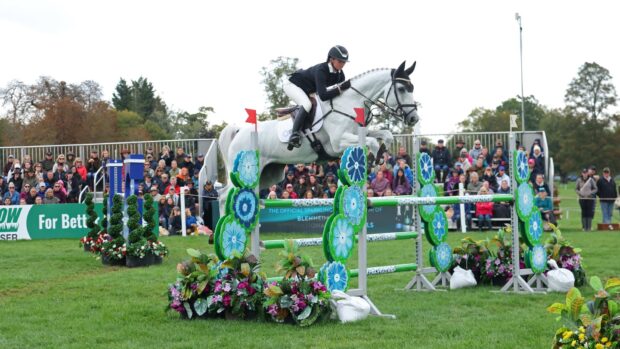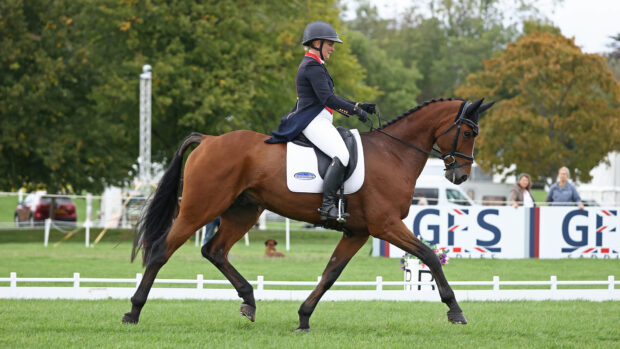The Olympic eventer, who is guest editing the 14 November issue of Horse & Hound magazine, gives her step-by-step guide to an exercise to help you with skinny corners, and fences that require you to jump with pinpoint accuracy
The aim
A lot of run-outs are caused by the rider under- or over-shooting the approach to a skinny. Usually the rider turns too early, often because they think the horse won’t respond when they first ask, so they have to give the aid sooner rather than later.
You might get away with it at a small, upright skinny, but as you go up the grades and start meeting skinny corners and fences that require you to jump with pinpoint accuracy, you will be making an already difficult fence even trickier.
The aim of the cone is that it allows the rider to develop a feel for where they should be making a turn.
The exercise
- Once the horse is confident cantering over skinny, upright fences, I introduce a small corner. I use ground rails again to begin with to channel him to the middle.
- Course-designers are increasingly using corners with narrow arms, so I like to practise these with my young horses from an early age. Unlike long-armed corners, where you need to aim for the narrow end, you should treat skinny corners more like arrowheads.
- Getting your line right on the approach is vital, so I put a cone on the approach, about four or five strides from the corner, in a straight line, to turn around.
- Establish your canter, making sure the horse is well connected between your hand and leg. Think about turning the horse’s outside shoulder around the cone so you don’t let him fall out. As soon as you go to your inside rein, you risk losing the outside shoulder – a common reason for the horse to run out.
- Once you have negotiated the corner well, try stringing it together with another skinny on a curving line, so the horse learns to look for the next fence and stay on a line. You can put a second cone to turn around between the two fences.
- When the horse is learning, I would do this type of schooling once a week or two days on the trot followed by few days break. I find that way they learn quicker and take it all in.
Like this? You might also enjoy reading these:
Gemma Tattersall: how to make your horse focus on his footwork
9 common cross-country queries solved
Subscribe to Horse & Hound magazine today – and enjoy unlimited website access all year round
Watch out for
- Looking earlier is crucial, especially with skinnies. People often tell you to pick a point in the distance beyond the fence and focus on it, but that doesn’t work for me. I like to keep my eye on the fence.
- I once watched a video of Michael Jung training a novice horse across country. He never once looked down at the horse’s neck or anywhere other than where he was going. Your vision is a really powerful took and if you are beaming in on a fence, so will the horse. If you are looking elsewhere, so will the horse.


